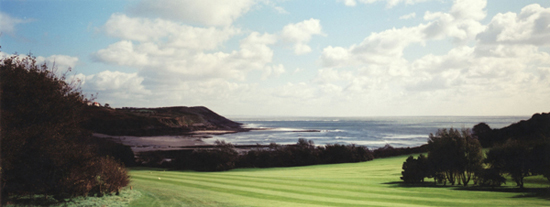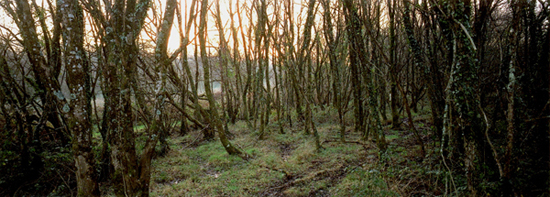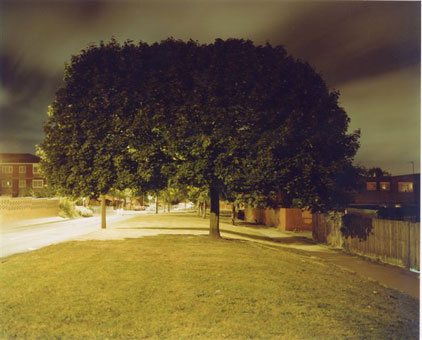Capturing the British countryside, from the South Downs to the Norfolk Fen and Constable’s Country in the East of England, Richard Billingham’s photographs expose the rich textures in these landscapes. His panoramic views unearth the particular geology, vegetation, changing weather and light conditions of these places, some of which he revisited over a period of years.
The works in Panoramic have a visceral aesthetic, revealing Billingham’s emotional and creative relationship to nature and landscape and drawing on his background and sensibilities as a painter. They explore rhythm, pattern, repetition and dynamic composition as well as the tableaux in nature and often record a transformative moment in the landscape. References to the pictorial rhetoric of British landscape painting from the 19th century to the present are reflected and further reinforced by showing these works alongside a selection from Towner’s Collection chosen by Billingham and his panoramic film Sweep, 2004.
http://www.townereastbourne.org.uk/exhibition/richard-billingham-panoramic
I wanted to review Richard Billingham’s work to gain a greater understanding of his thought processes and the compositional elements he uses in his work to represent the landscape around him. From previous research, it appears that Billingham’s work would tend to play more on specific stereotypes opposed to other artists work. From my perspective, his work comes from a much stronger standpoint that has great influence over his images. His influences may come from the places his has previously visited, the connection he has personally to the environment he is working in, or the objects or structures found within that location. Like many photographers working within many forms and styles of photography, he has not restricted himself to a particular medium in which to capture his images. From the work I have chosen below it is visible that Billingham has chosen to take his landscape images in film and in a panoramic format. Like Koudelka’s series ‘Wall’ Billingham has used the long format to achieve a greater sense of perspective, enabling him to show a greater mass of land and the environment that would usually be hidden in the standard 35mm format.
Below are four images taken from a selection of Billingham’s projects with analysis of their form, structure, and composition.

I chose this image due to the various qualities that display the typically British countryside. Billingham has captured the often small but significant elements that create an image of the countryside, and in doing so created a picturesque stereotypical picture of what many would consider the essence of Britain. Elements such as the scattered cloud cover, the mown stripes on the golf course and the sandy beach with the cliff face create a landscape that is instantly recognizable as England. As a viewer, the picture is quickly relatable but Billingham has exaggerated and ‘made beautiful’ a scene which is so common in our country. Initially, it is visible that people are not visible in the image, this creates a scene of peacefulness and tranquility that would draw many into the photograph. Other techniques have been used such as shooting from a higher level, allowing Billingham to look down on the landscape in question. Thus providing a more evaluative picture of the scene before him with more objects to add significance. Techniques such as these allow a viewer to quickly identify with the image whilst also prompting questioning of the environment around them.

I chose this image due to the leading lines and complex composition. Billingham has again got to a higher level to take the image allowing him to fill the frame proportionally, allowing a viewer to understand and see more of the landscape image that is before them. For me this image is about the leading lines, the complexity of the trees and the naturally warm tones that the film has created. The width of the image allows us as a viewer to understand more of the location in which Billingham is positioned and from this, we get a greater understanding of how the landscape changes from side to side. The warm tones work well with the lush green undergrowth and we are quickly taken on a small journey through the woods.

Like the previous image, this picture is also of a woodland and shot in a similar format. Although in this photograph the importance of choosing the correct time of day to photograph in is clearly evident. As Billingham has taken this image either early in the morning or later in the evening the weather conditions are more atmospheric and the picture takes on an entirely different aesthetic. Due to Billingham using film to capture the image the tones have been preserved, if not influenced by the low lighting conditions a little. Again the image uses a leading like and we feel as if we are walking through the woods towards the main focal point, which in this image would be the stack of logs off center in the composition. In this image, in particular, there is more variation in the exposure throughout the image. This allows a viewer to see how the environment affects the amount of light and again create a more realistic interpretation of the landscape.

This is the final image I have chosen and due to the format does possibly not fit into the landscape category. Although I believe it does due to the width, space and environment shown. Billingham has again made sure there are no people visible in the image and uses a primary focal point, allowing the viewer’s eye to focus in one area initially. It is clear the image is a longer exposure as the clouds take on a misty effect in the sky. This technique could have also been used to remove people from the environment and provide a lighter exposure in a low light situation. As this image is a streetscape or urban landscape the light used is more of an artificial nature. This, in turn, means that the tonality and replication of colour are vastly different to the landscapes where the only light source is natural.
Richard Billingham’s images have allowed me to understand how everyday scenes can be made more interesting through the use of composition, shooting height and time of day. As I have analyzed a range of images in his work I have been able to understand how he adapts to each environment, this has allowed me to see how different circumstances are photographed and the techniques that are at my disposal when photographing in my own location.